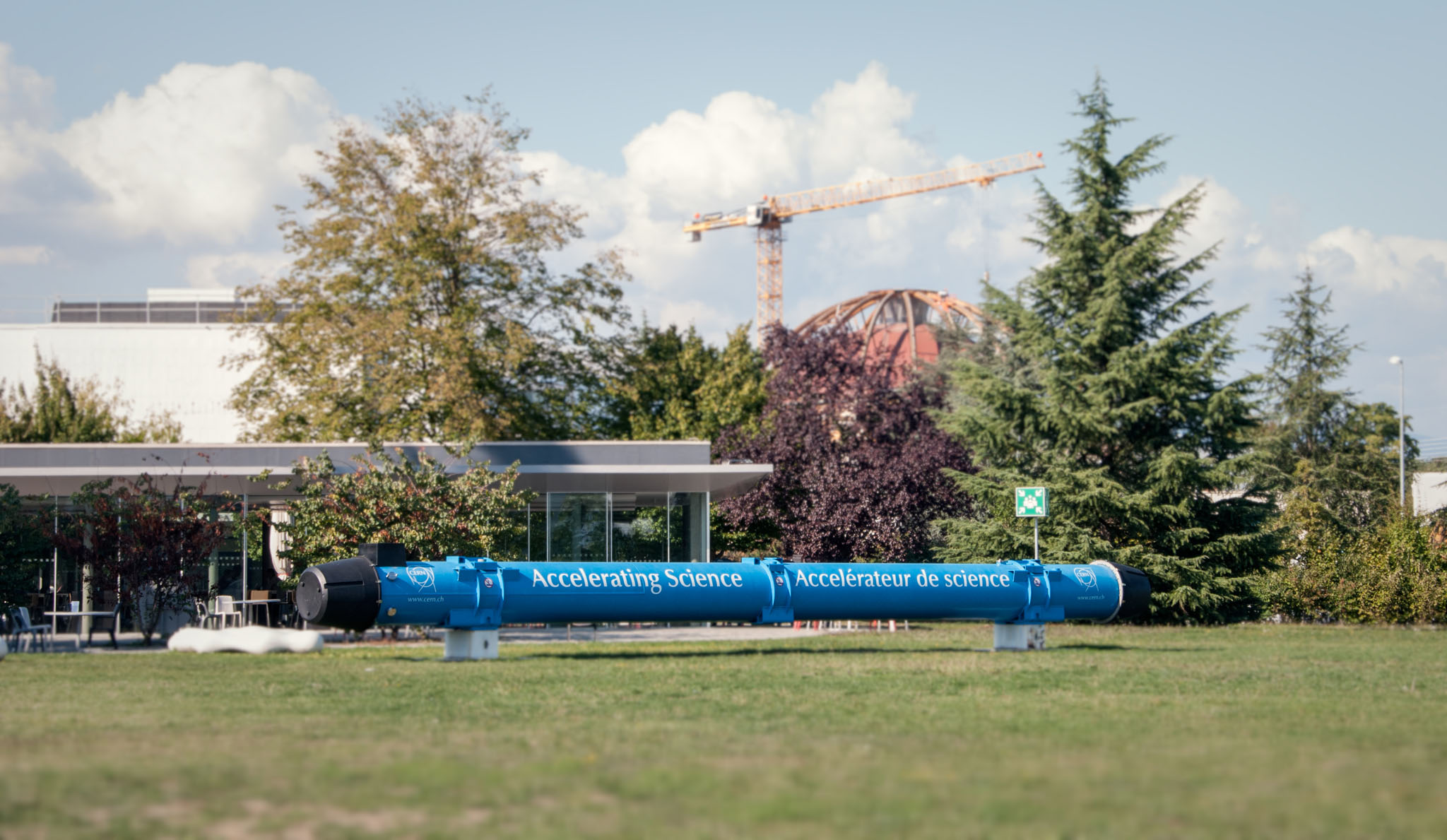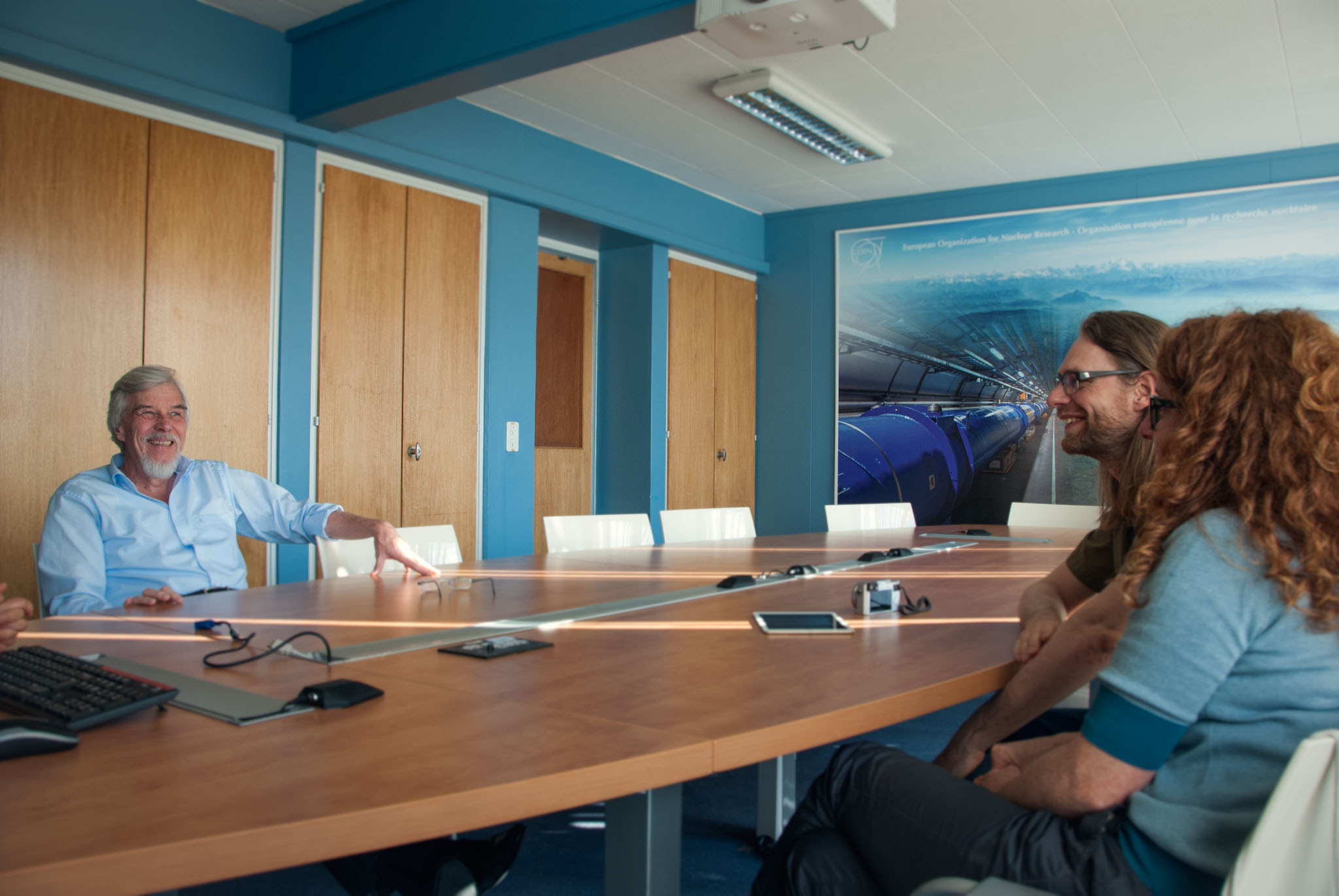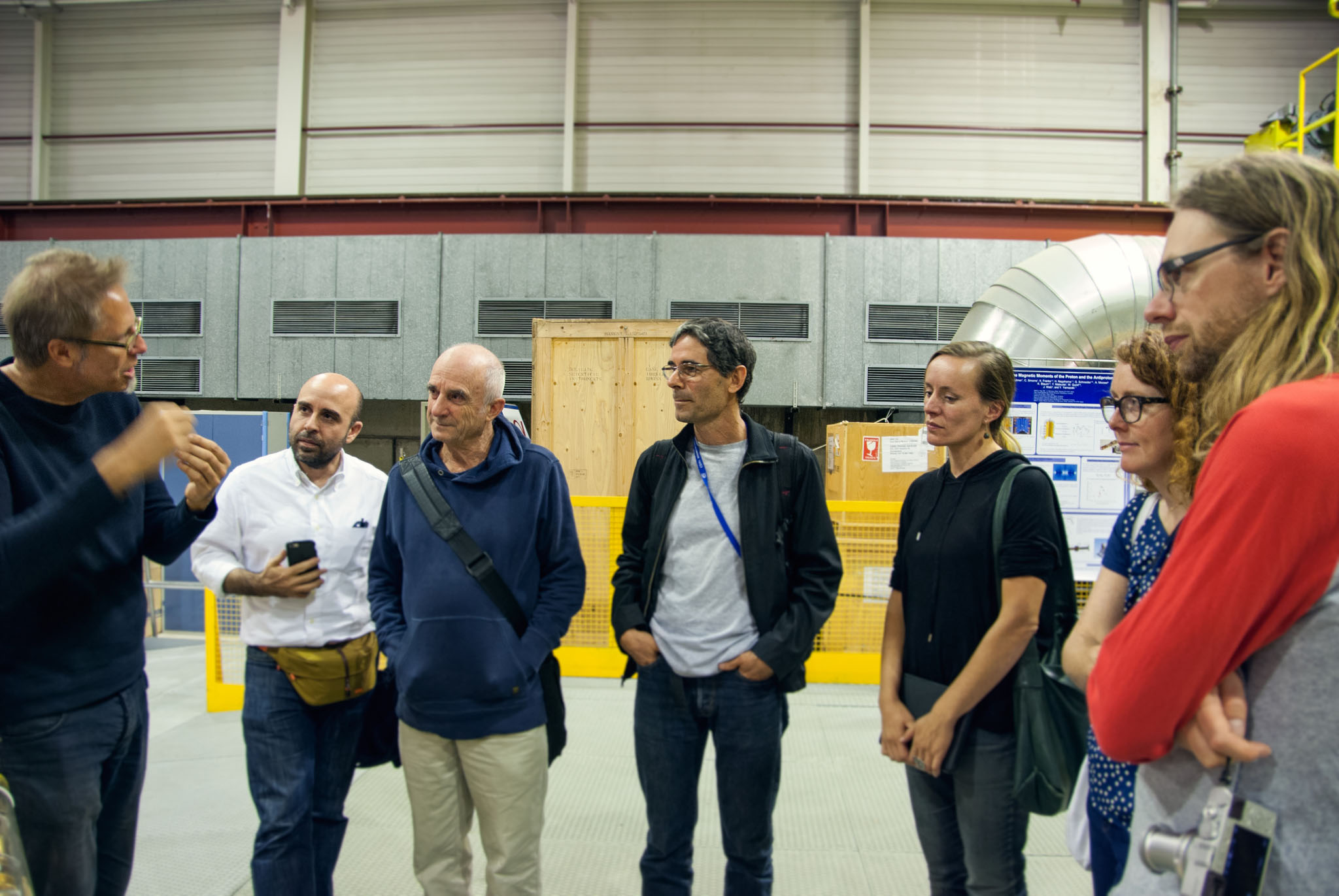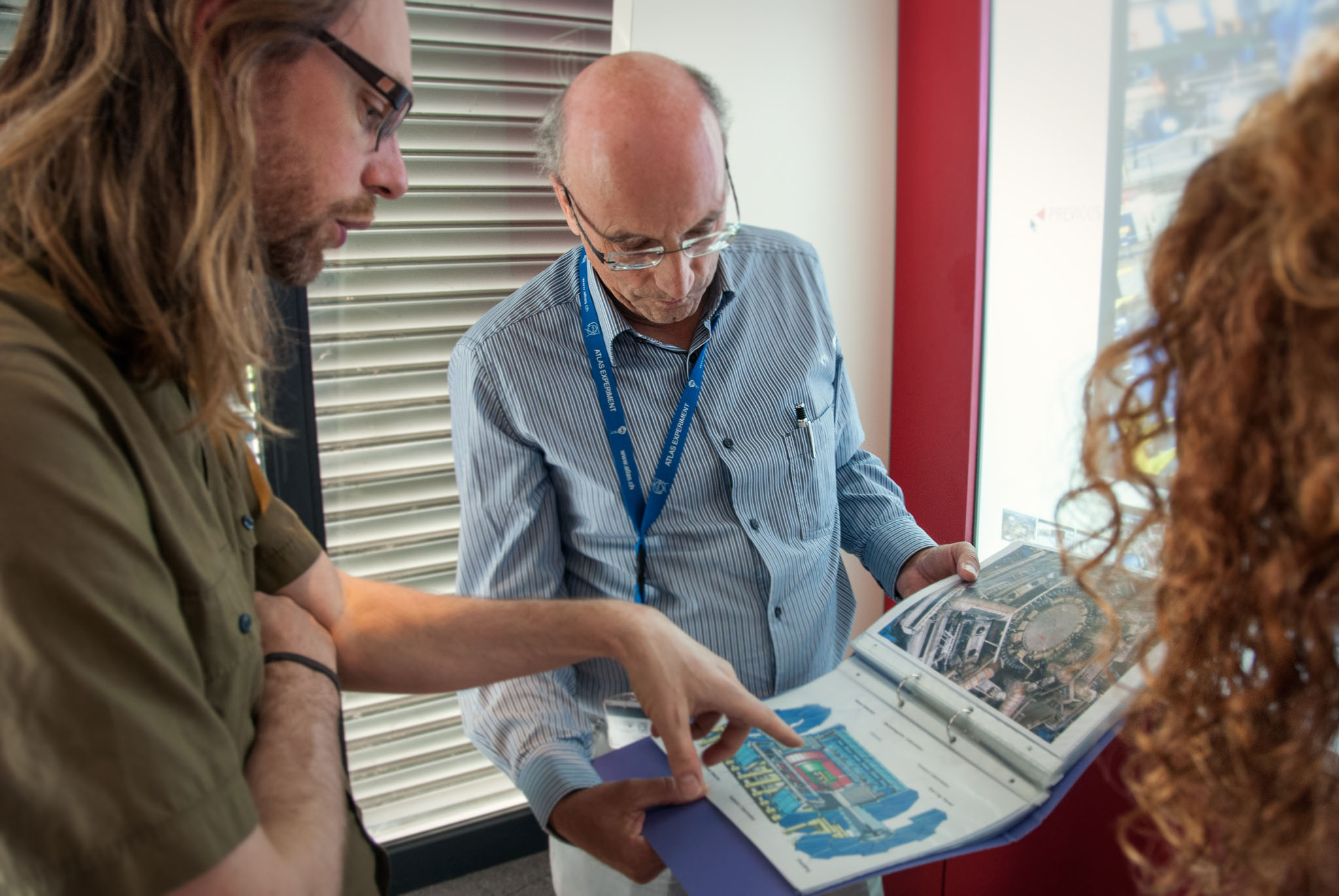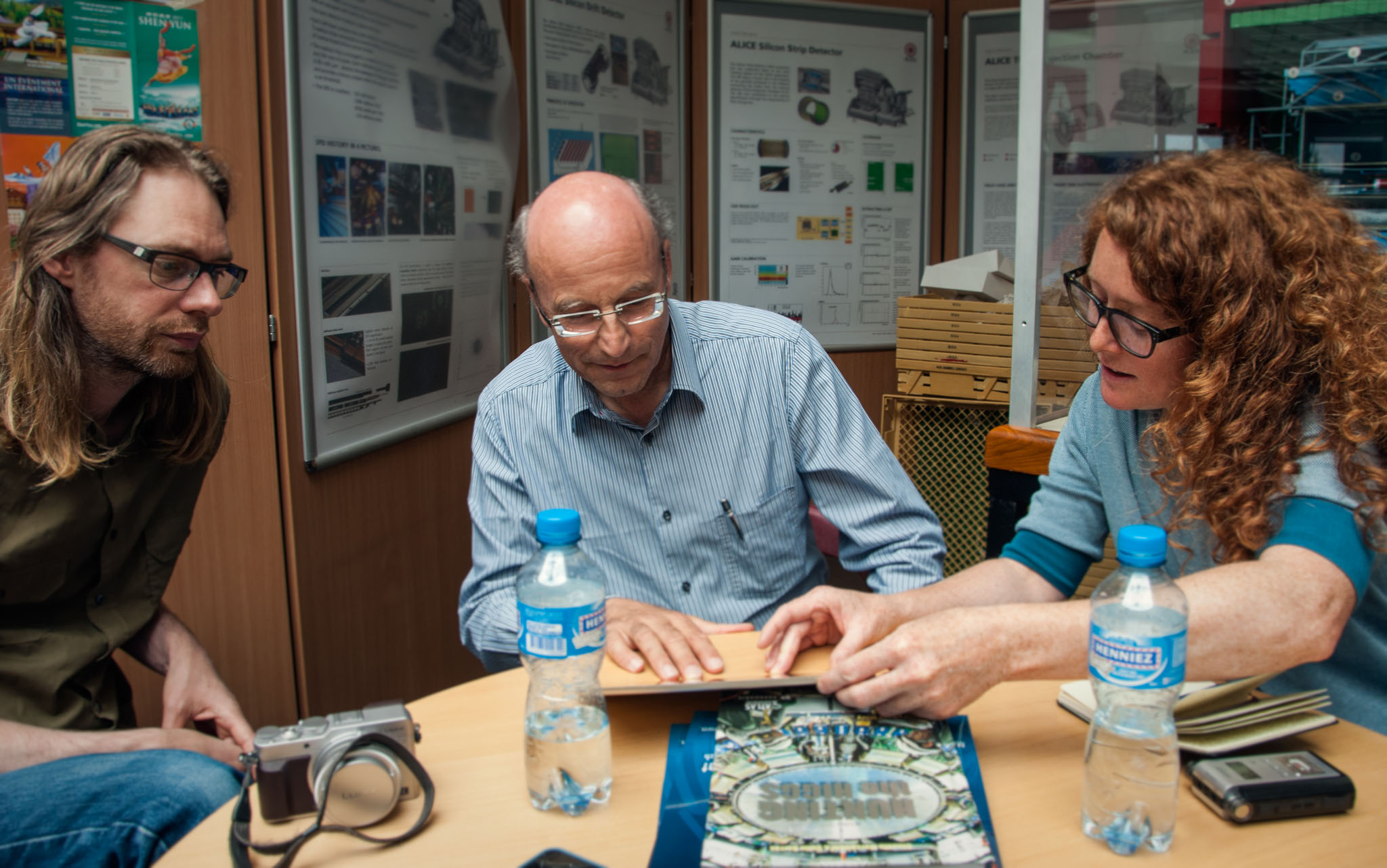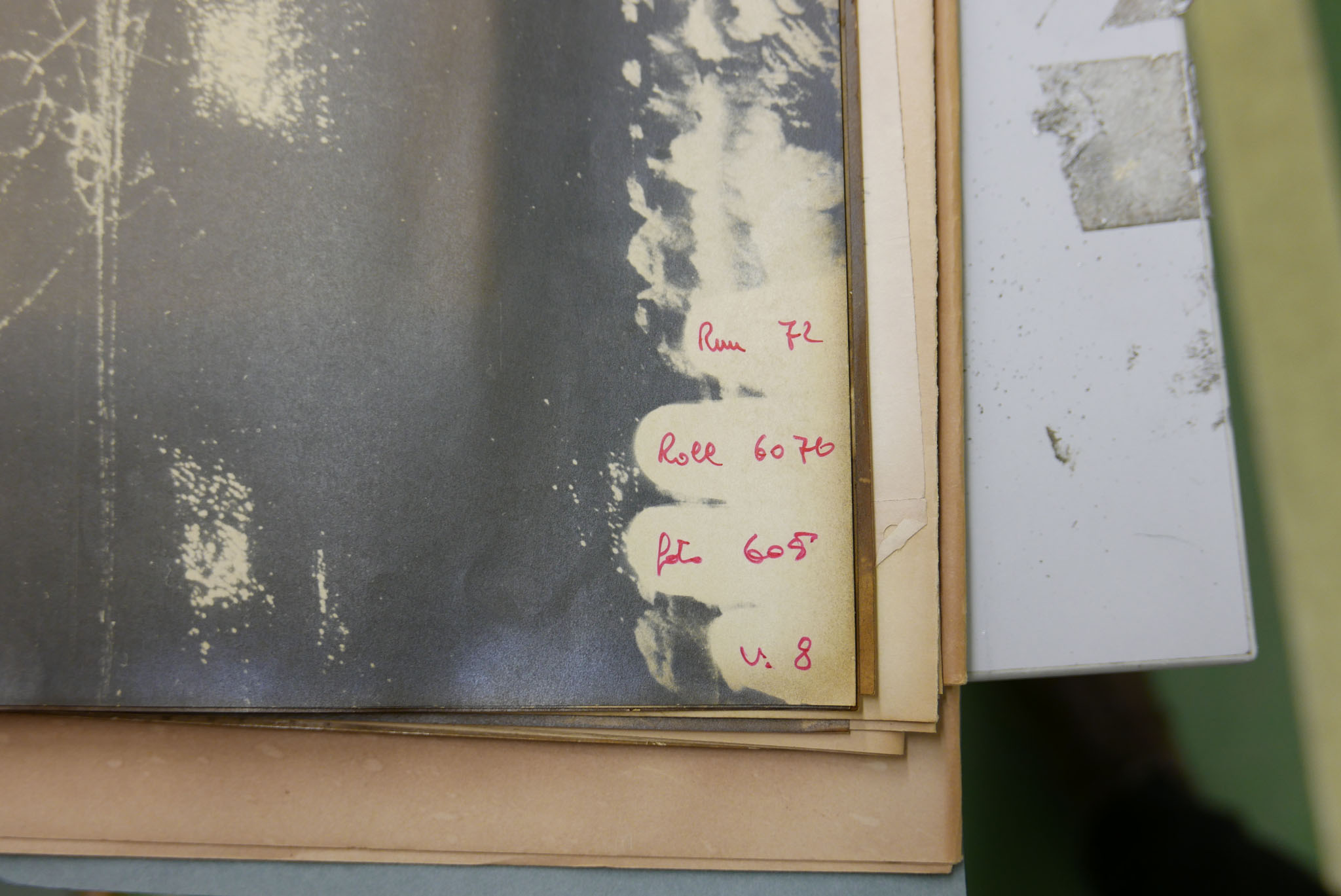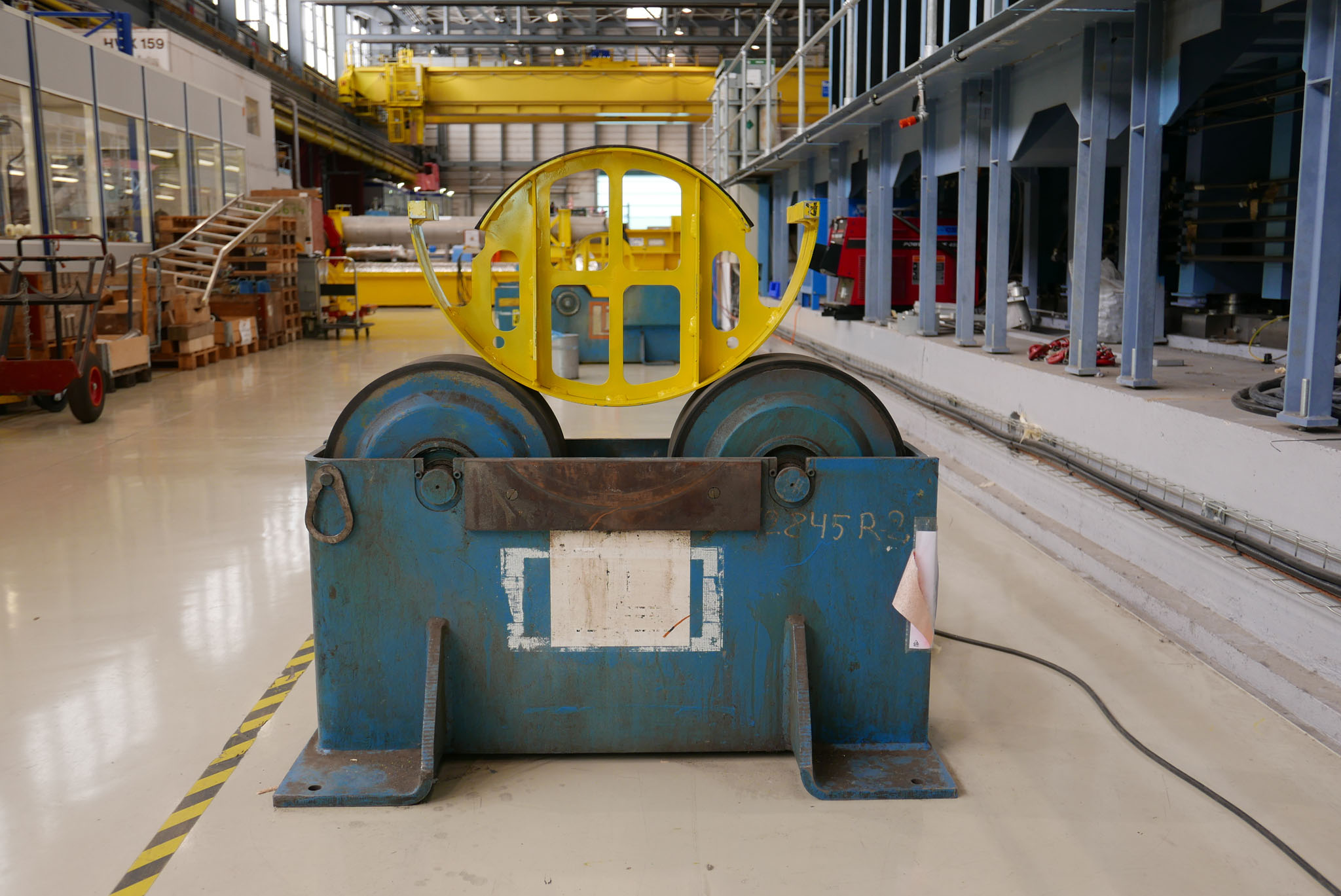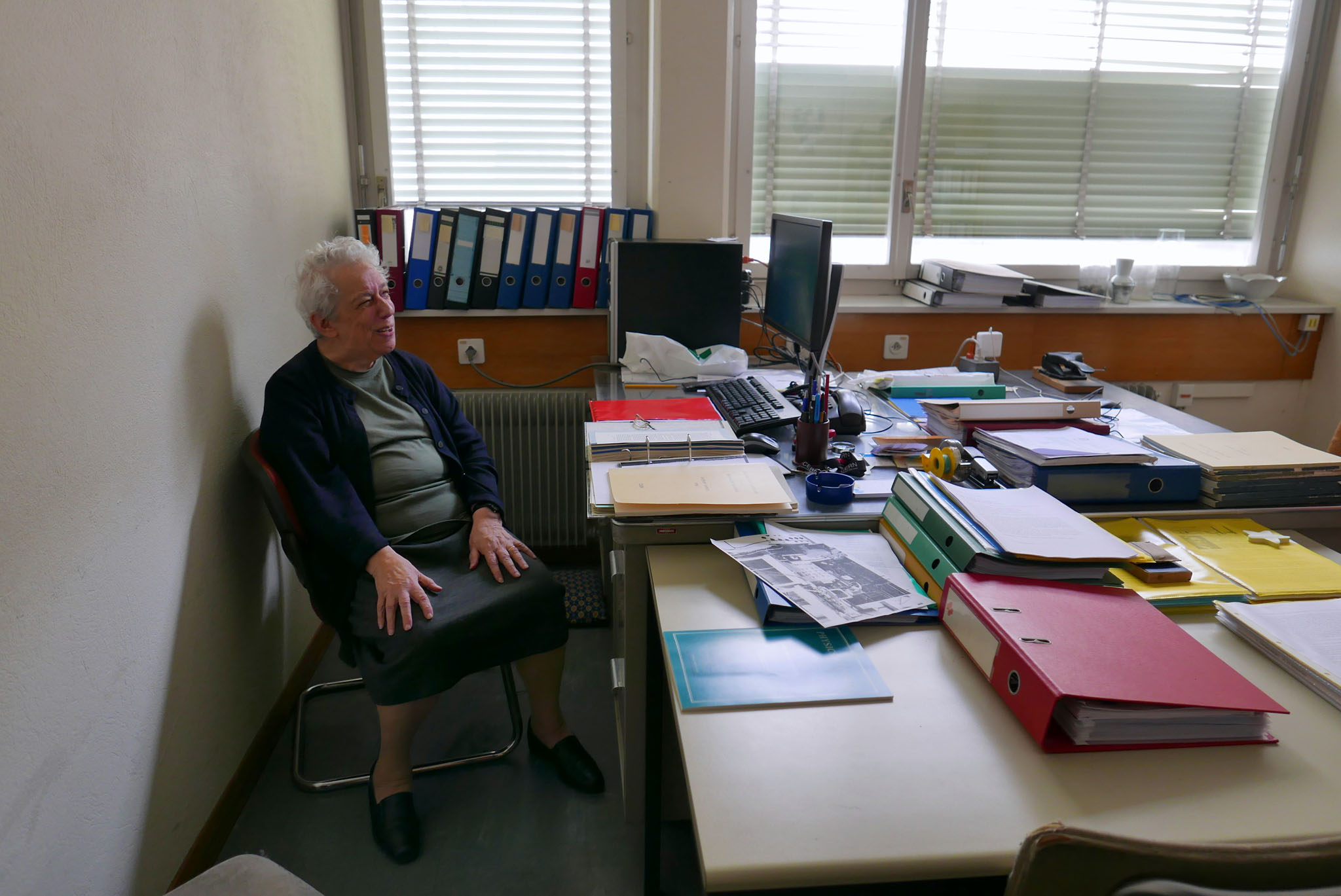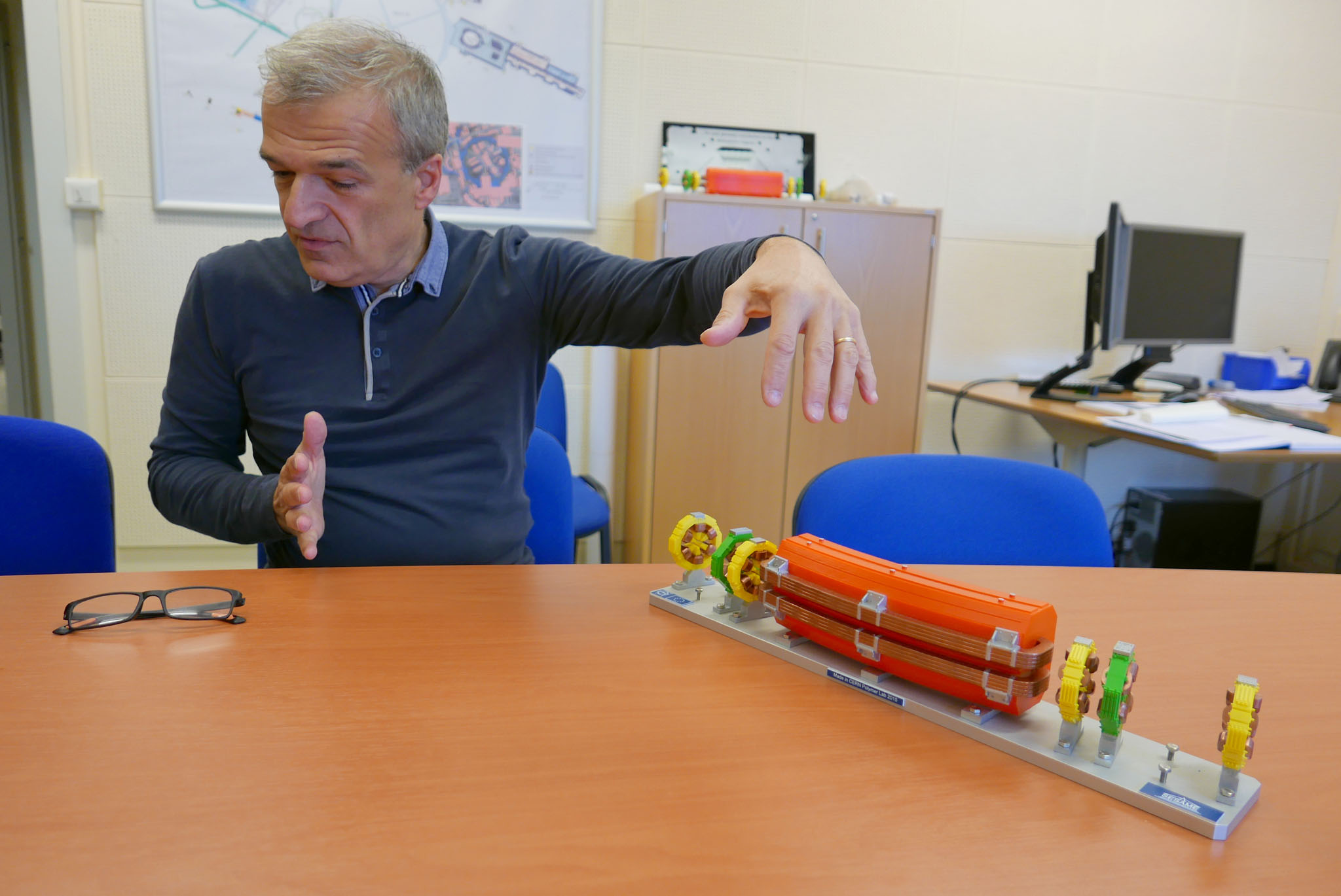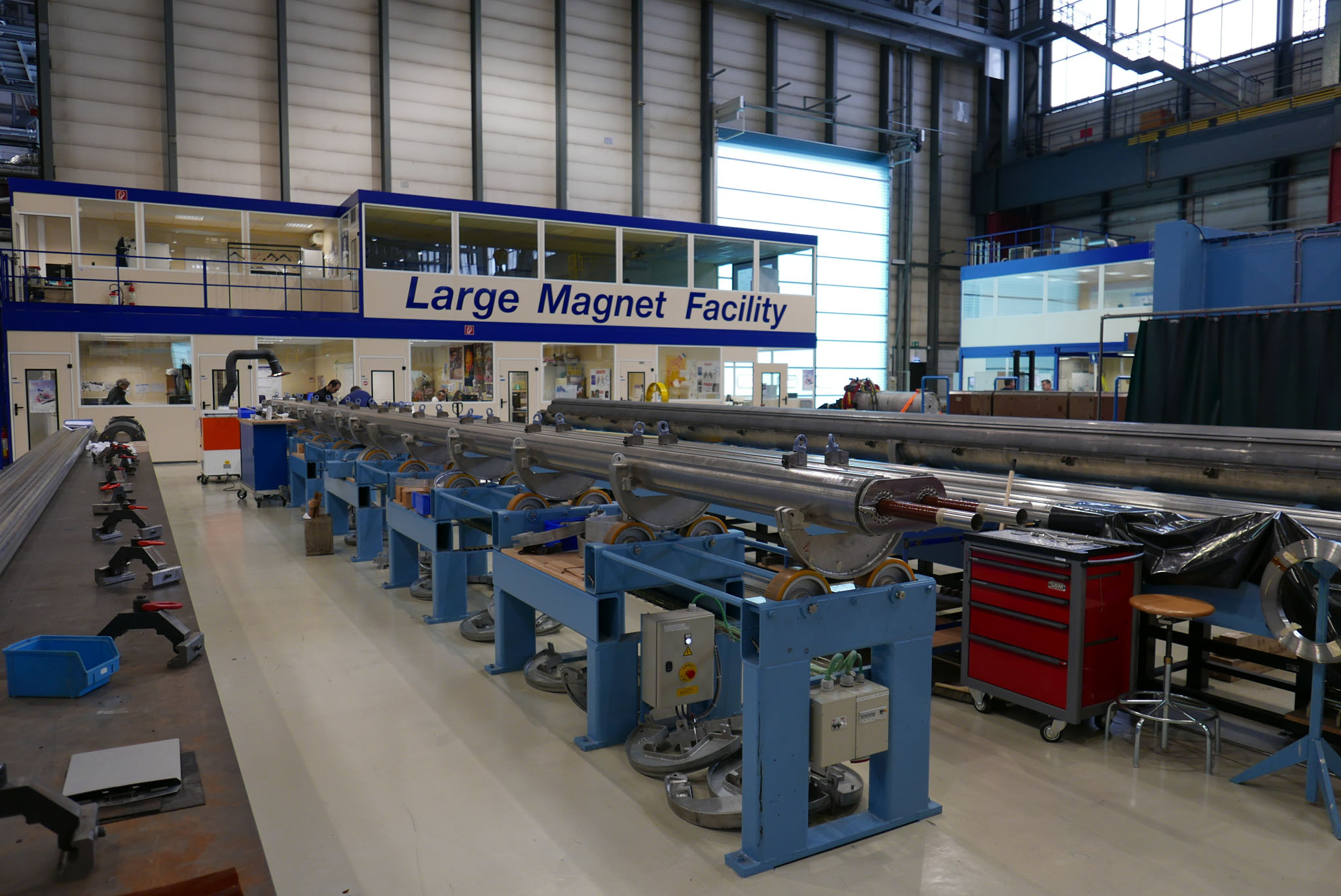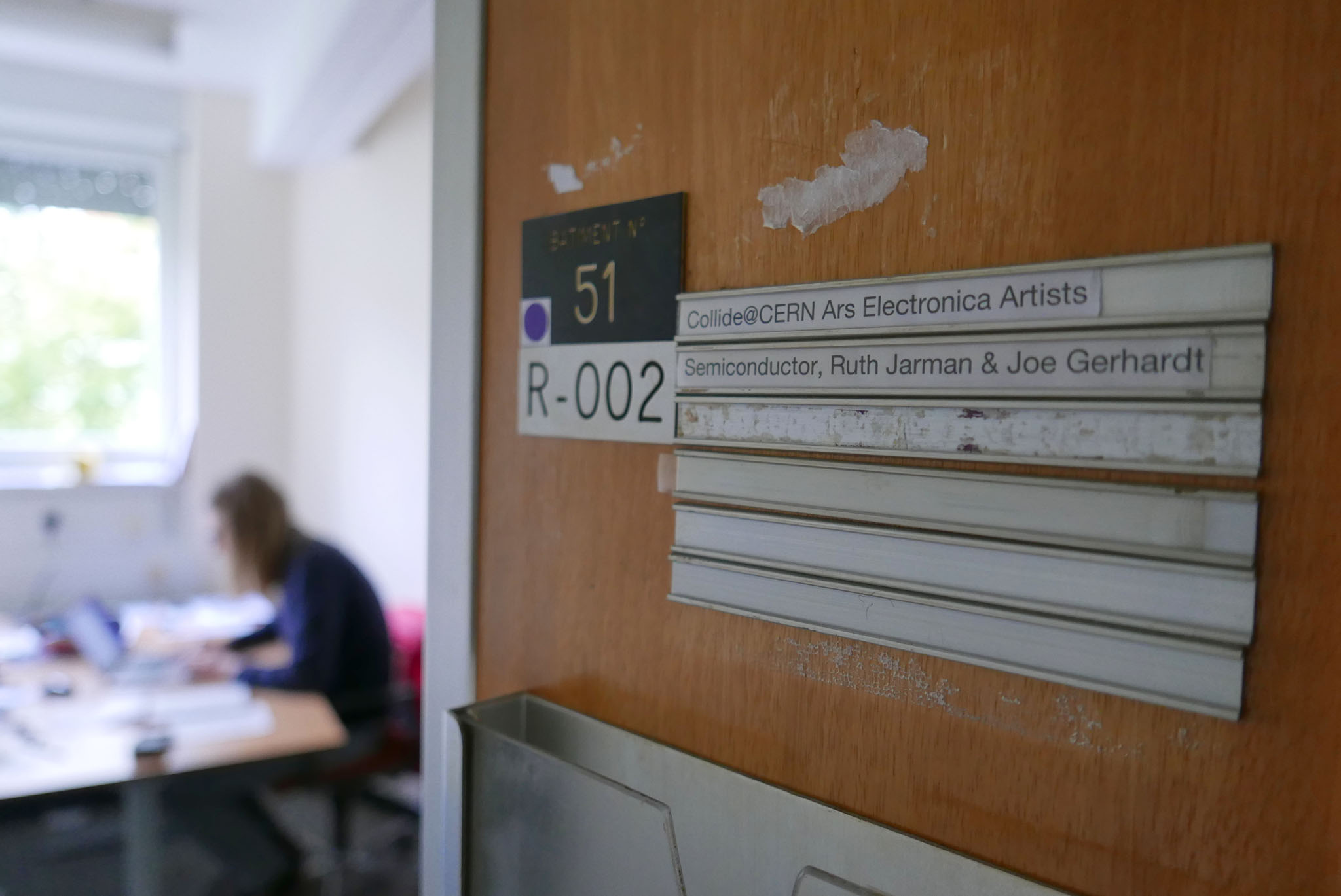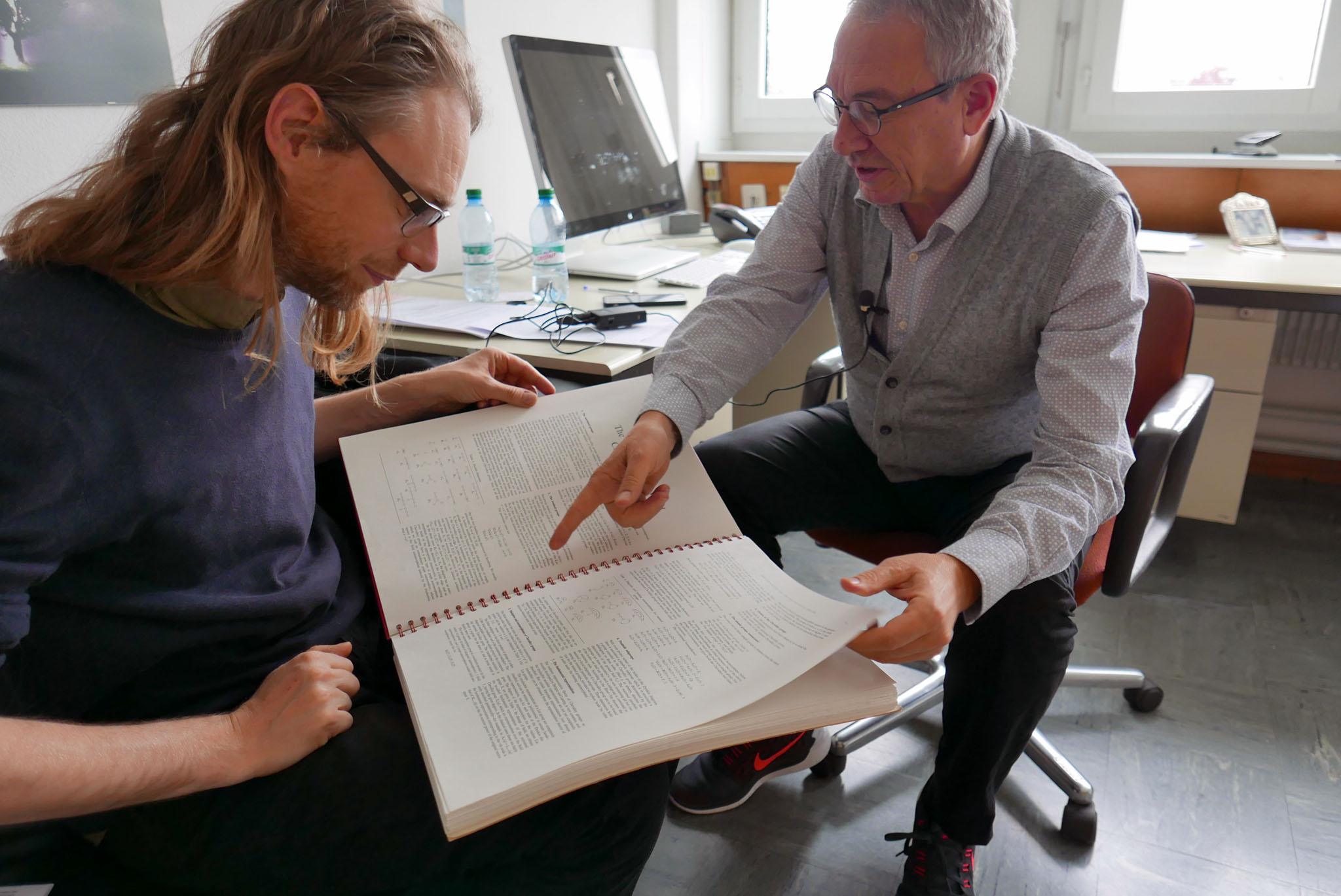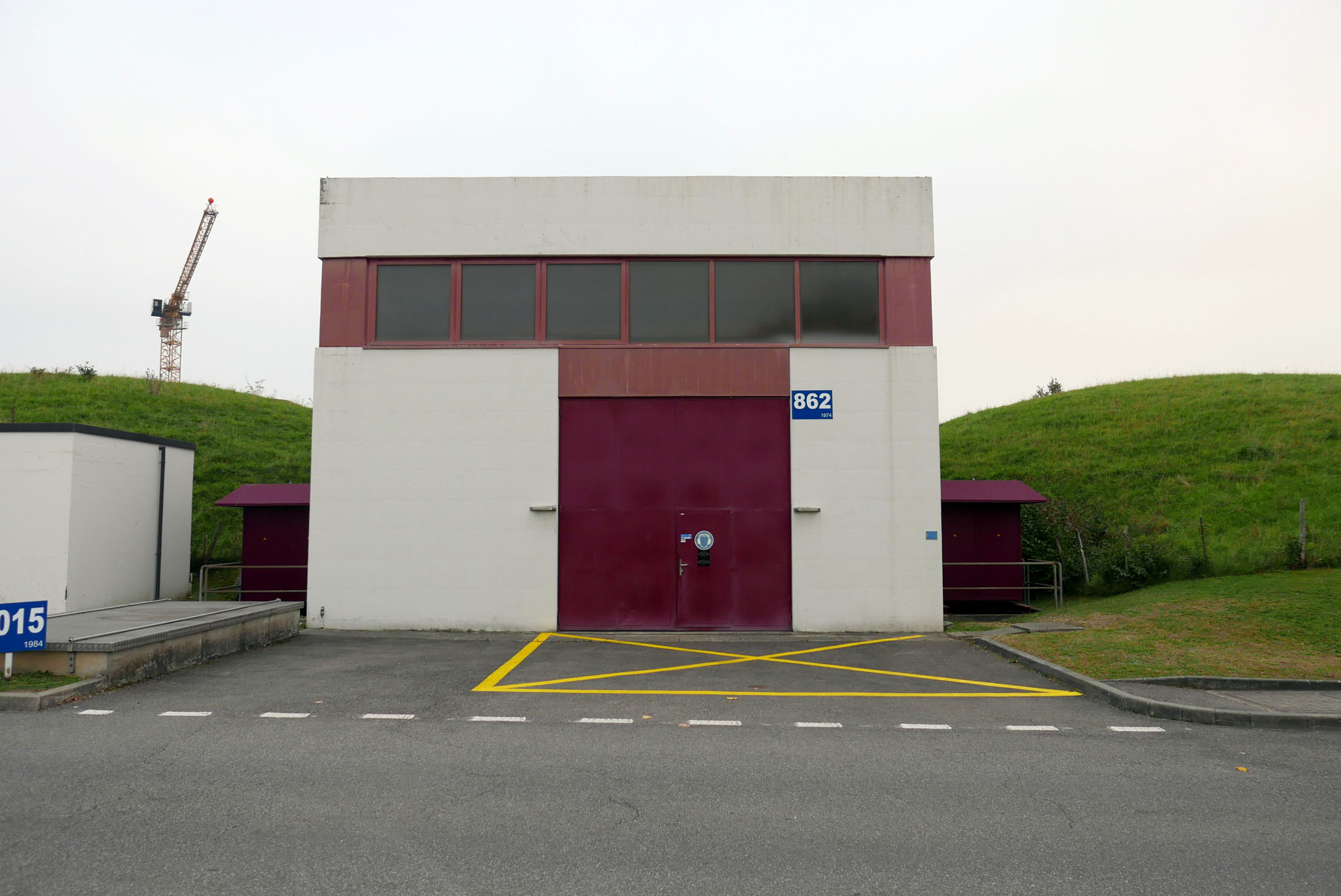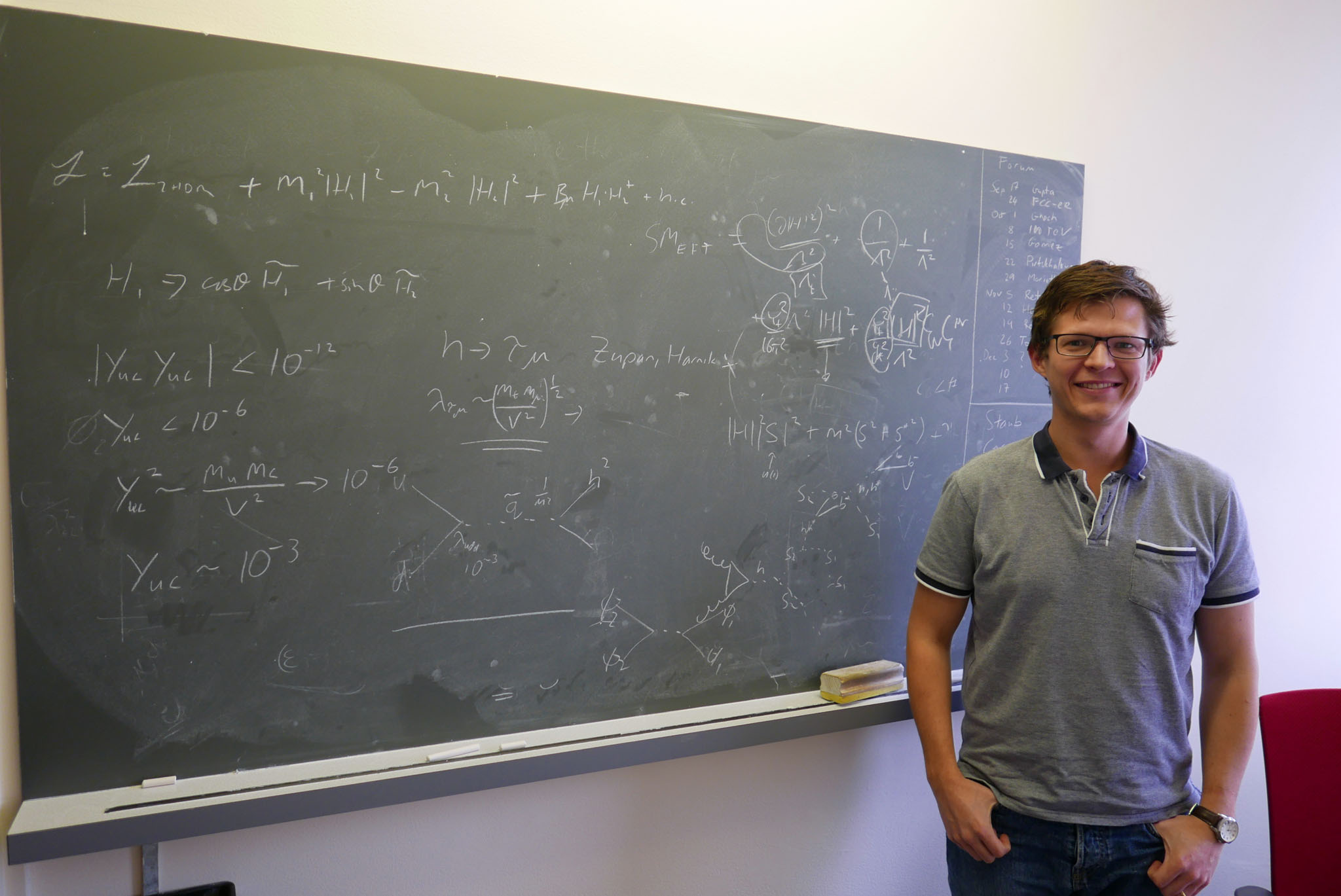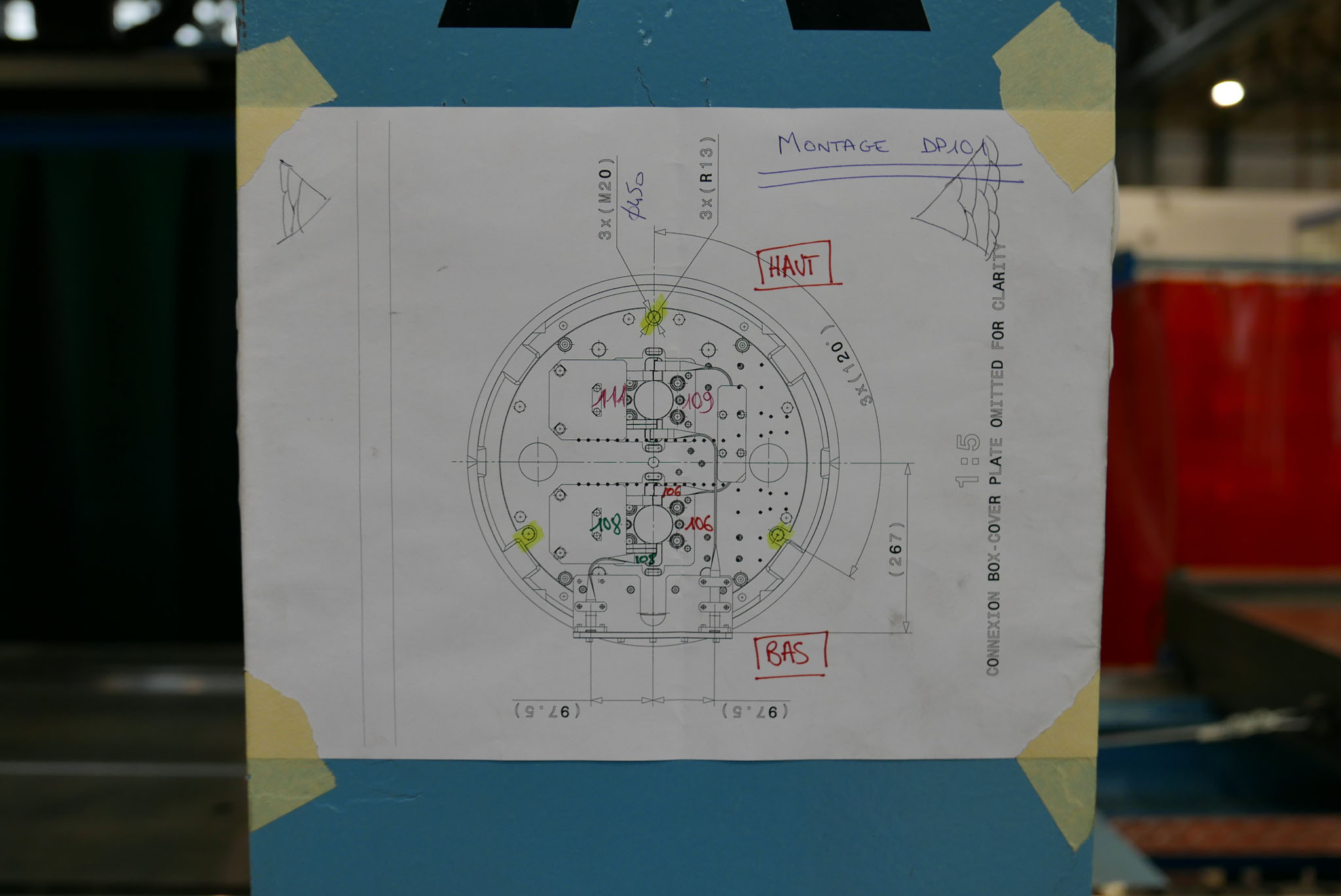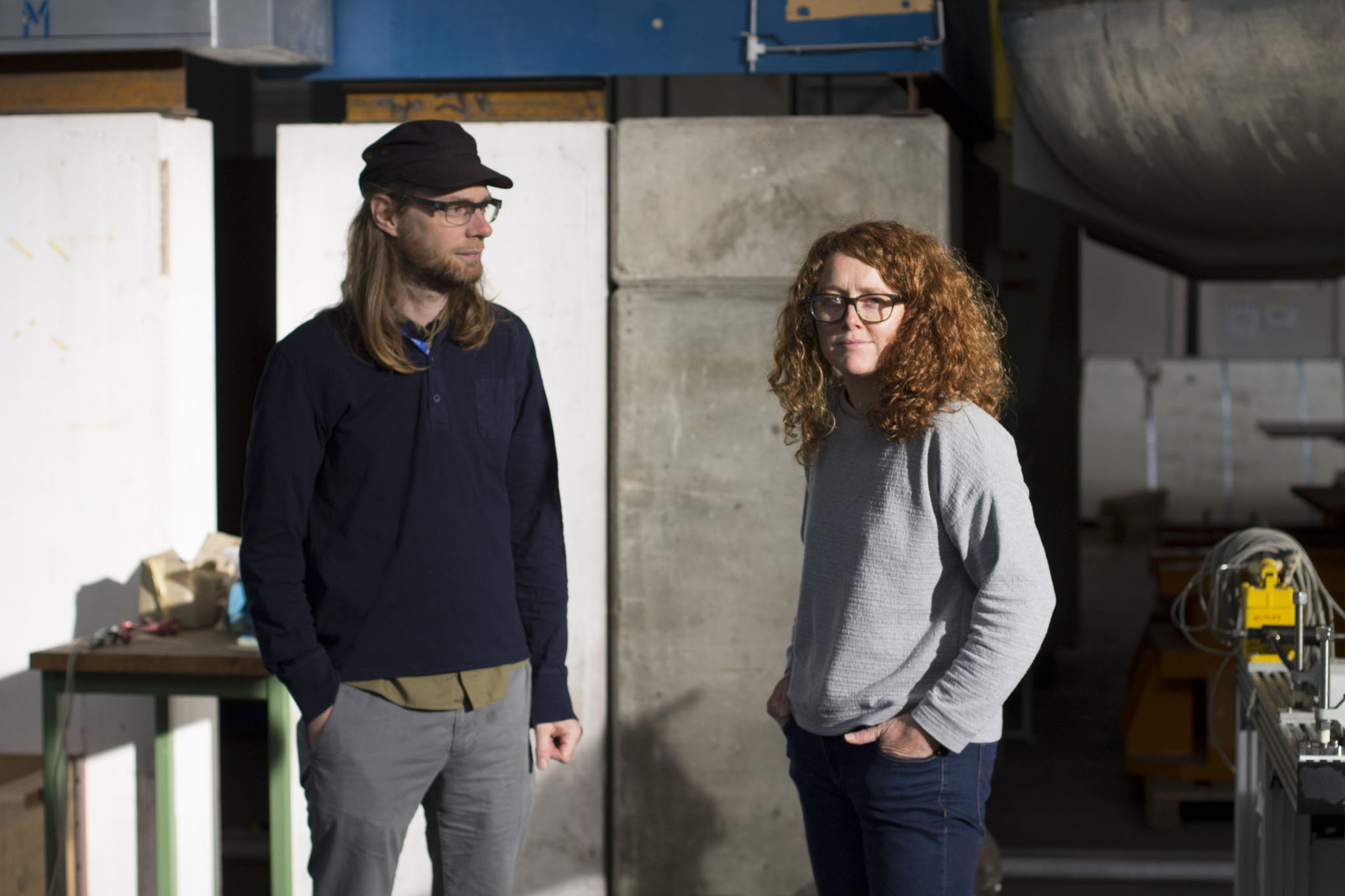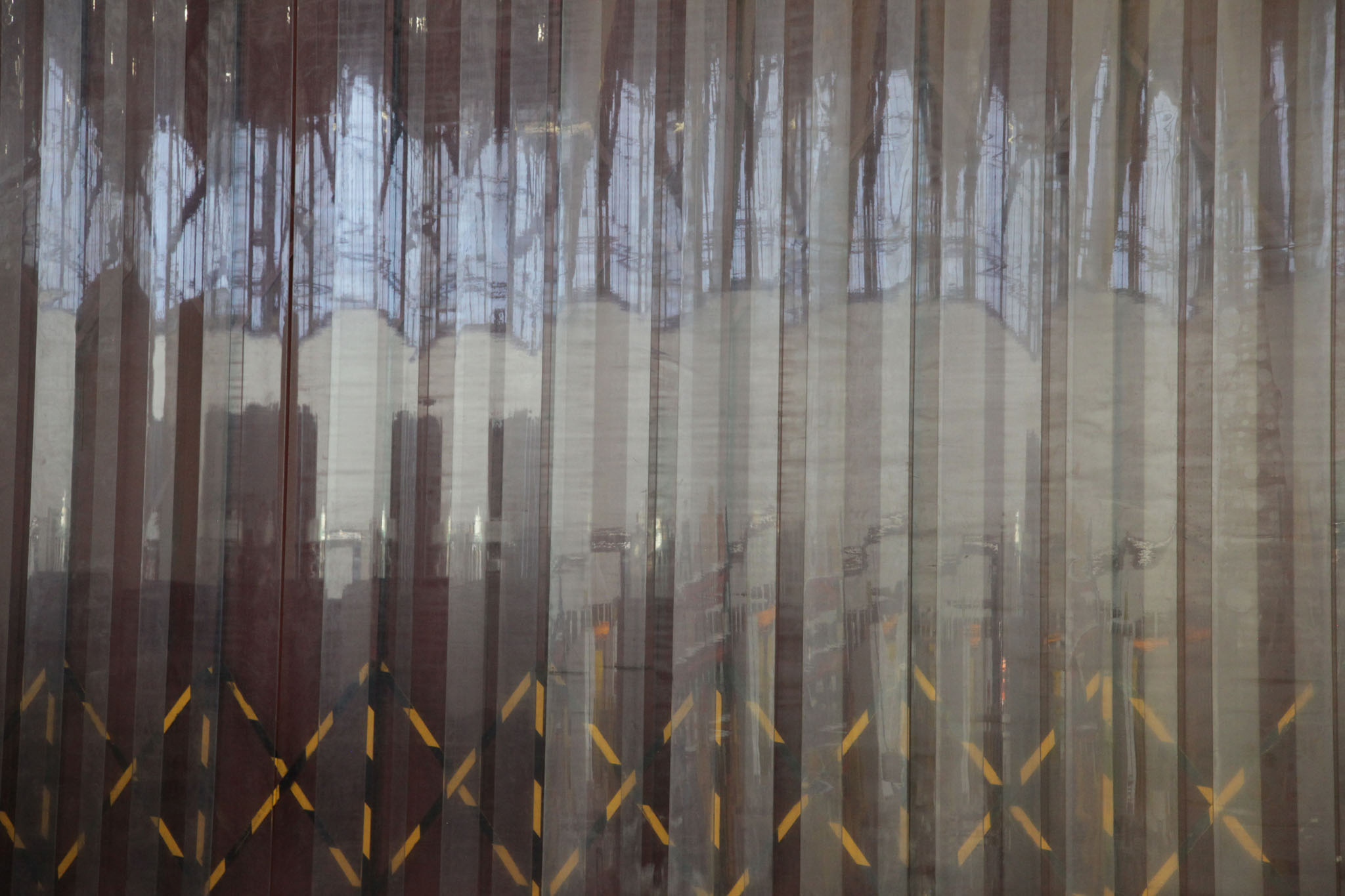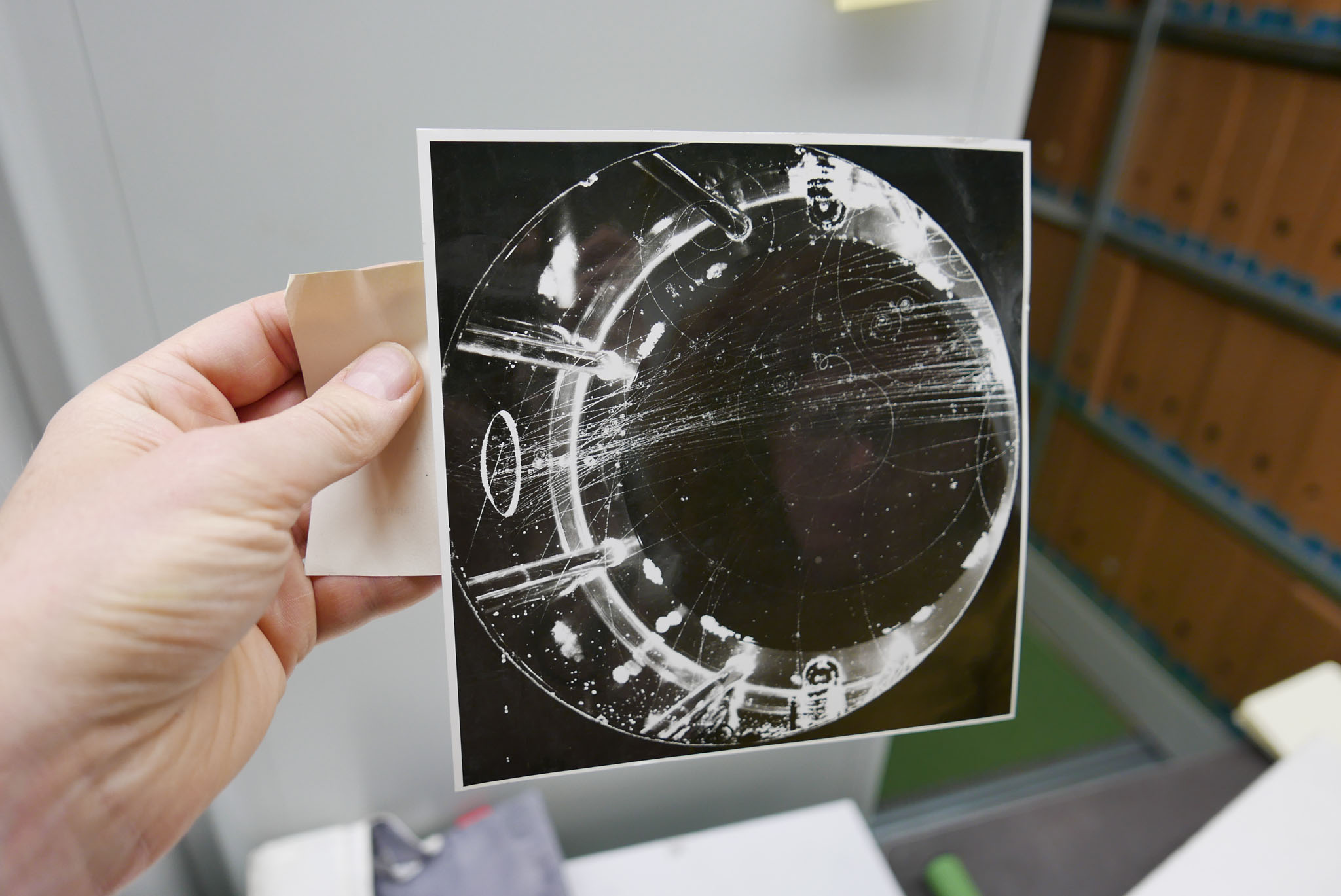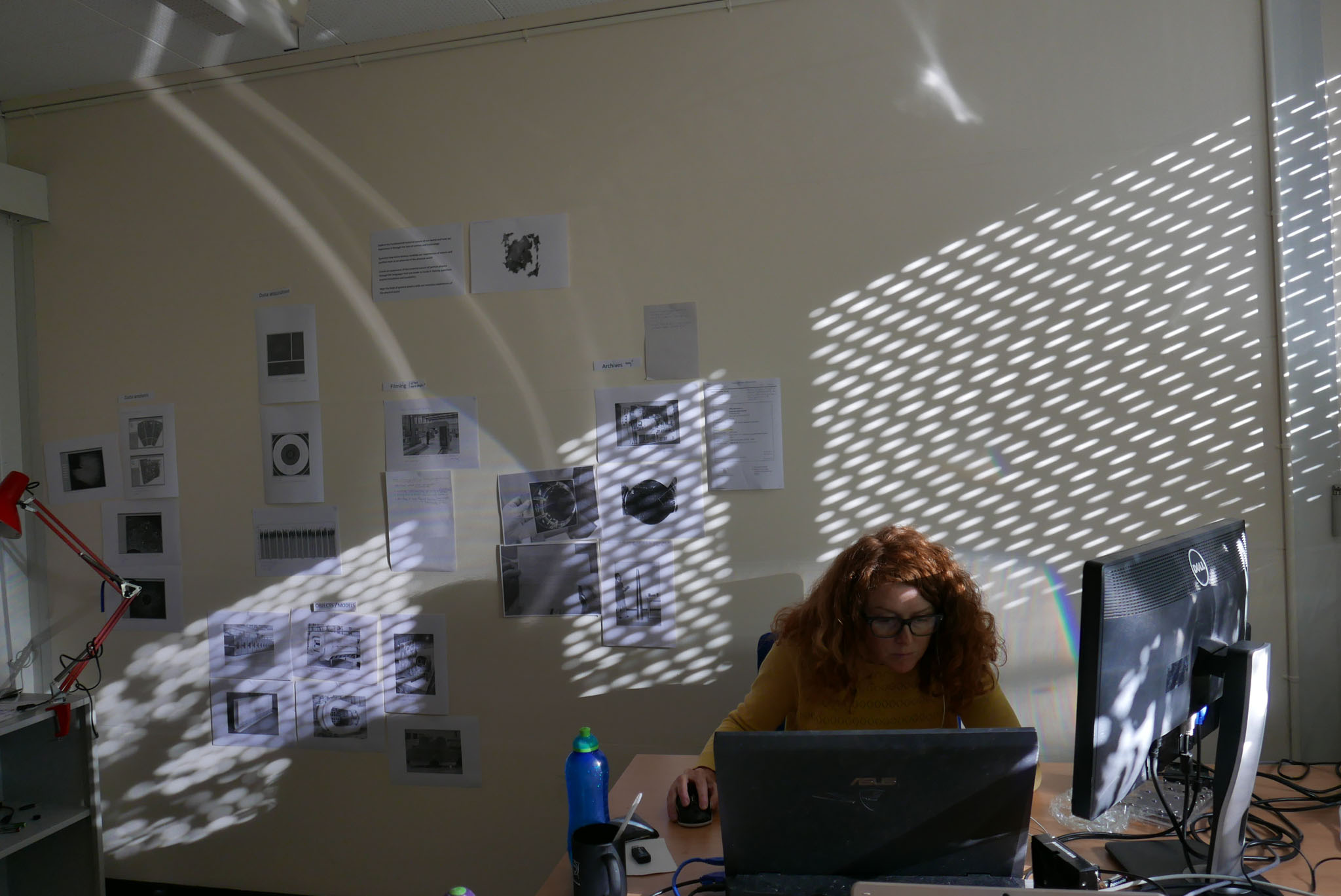The English artist duo Semiconductor received the Collide@CERN Ars Electronica Award in 2015, which is awarded as part of the European Digital Art and Science Network – an international initiative offering artists the chance to spend several weeks at research facilities like CERN and the Ars Electronica Futurelab.
In autumn 2015, the English artist duo consisting of Ruth Jarman and Joe Gerhardt started a two-month residency at CERN, the world’s largest particle physics research facility in Geneva. During their residency, Jarman and Gerhardt aim to create a digital artwork elaborating on the nature of the world and our perception of it, including consideration of how scientific instruments and particle physics discoveries influence our perception of nature. On the Ars Electronica Blog they have already outlined their plans for the residency and Monica Bello from arts@CERN talked about the reason why this residency provides a unique and exciting opportunity to share their combined expertise in cutting edge arts, science and technology. Here, Ruth Jarman and Joe Gerhardt are providing us a visual progress report of their research at CERN.
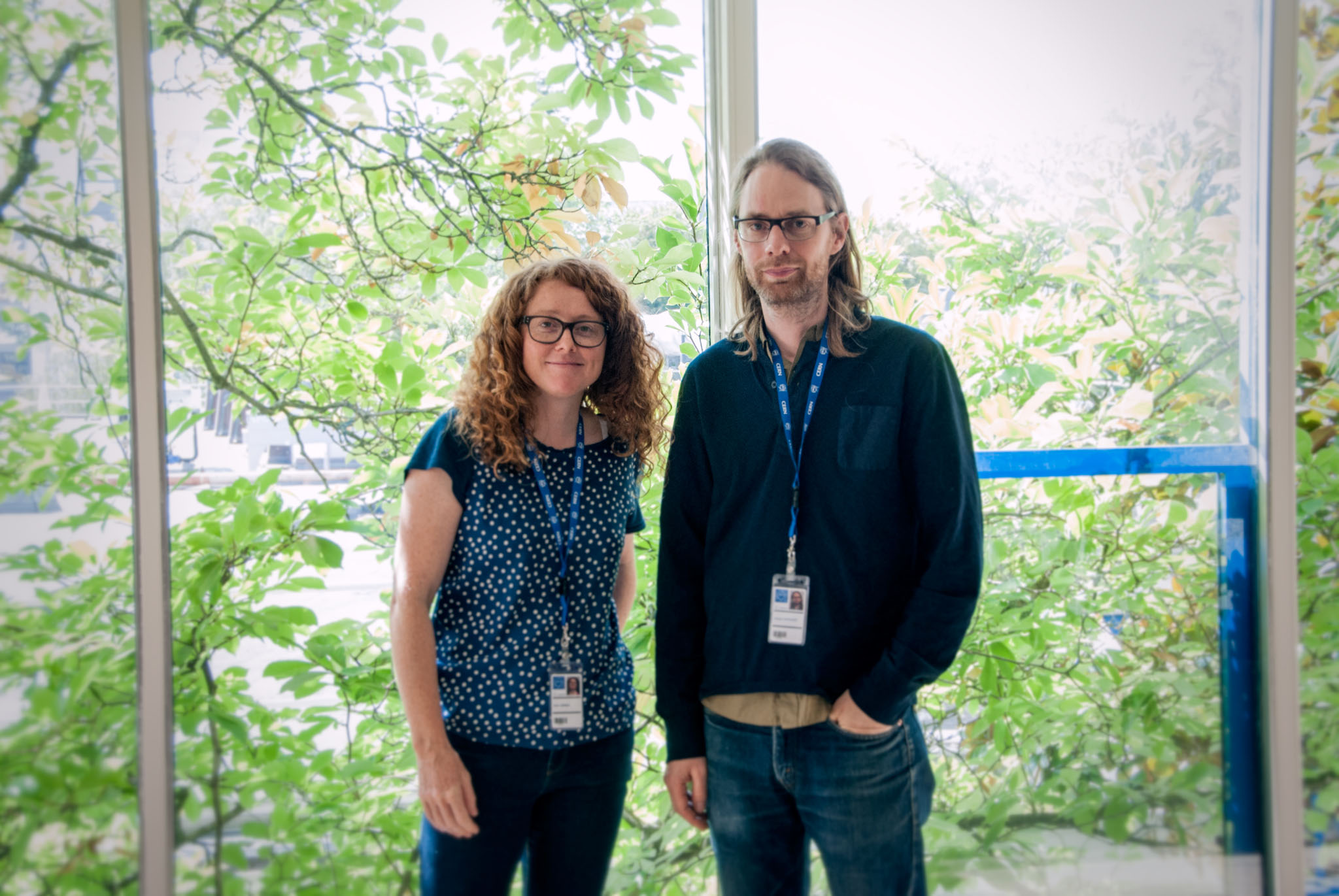
Ruth Jarman and Joe Gerhardt, two English artists collaborating under the name Semiconductor. Credit: Ars Electronica / Claudia Schnugg
Text by Ruth Jarman and Joe Gerhardt
We’re in the middle of an intensive journey at CERN, meeting many brilliant minds and bearing witness to incredible dedication, precision and openness at the boundaries of human endeavour. Our time here is precious and we have been cramming in all sorts of visits, meetings and interviews, to see where we may end up.
The Antimatter factory belongs to one of the first impressions that Semiconductor had during their introduction visit at CERN in October 2015. Credit: Ars Electronica / Claudia Schnugg
“Accelerating Science”, that’s the motto of CERN. Credit: Ars Electronica / Claudia Schnugg
If we are generally talking about CERN many of these pictures of machines that aim to accelerate and collide particles come into our minds. But there is more to see. Credit: Claudia Schnugg
Much of our time has been taken up talking to theorists and then re-visiting these recorded conversations, not to necessarily learn about particle physics, although that’s a nice by-product, but to get a sense of what it is as a language, how the scientists talk about what they do, what it sounds like and how it functions. These talks are really leading the ideas we’re developing.
Rolf-Dieter Heuer, Director General of CERN, is talking to the artists who are spending two months at this scientific facility. Credit: Claudia Schnugg
Michael Doser, expert in Elementary Particle Physics at CERN, gives an overview to this subject matter. Credit: Claudia Schnugg
Pictures and illustrations help them – together with CERN physiscist Peter Jenni – to catch a glimpse of what CERNs aims are. Credit: Claudia Schnugg
We normally find ourselves looking towards the technology to reveal something about matter that exists beyond our everyday perceptions, but here, it is coming from the theorists. They describe things about the quantum world that shatter our illusions of reality.
Yes, they do have blackboards at CERN and cosmologist Daniel Figueroa uses them to illustrate what he is talking about. Credit: Claudia Schnugg
Research within the research – the picture is showing Joe Gerhardt and Ruth Jarman together with CERN physicist Peter Jenni. Credit: Claudia Schnugg
The introduction visit at CERN – with Monica Bello (Head of Arts@CERN), Peter Jenni (physicist at CERN), Ruth Jarman and Joe Gerhardt (Semiconductor) and Claudia Schnugg (Ars Electronica Futurelab) in front of the ATLAS experiment. Credit: Julian Calo
We have come to realise that the theorists have access to a kind of extended reality through the models they make and the mathematics they use.
One of the most exciting treasures are locked in the archives of CERN. Joe Gerhardt and CERN archivist Anita are checking out Bubble Chamber films. Credit: Semiconductor
What could that be? Credit: Semiconductor
Since its beginning, at CERN it’s all about fetching, storing and analyzing data. Credit: Semiconductor
We’re interested in continuing this journey and exploring theoretical physics signature on the matter being studied, but at the moment we’re struggling with what is real. Beyond the complexities of the quantum we’ve been delving into other areas of CERN of which there are many.
Every piece has a number at CERN – and a purpose. Credit: Semiconductor
In the 1950’s scientist Maria Fidecaro obtained the CERN fellowship and worked at CERN until 2012. And after over 60 years of working at CERN she’s still present at the institute. Credit: Semiconductor
Scientist Davide Tommasini helps Semiconductor to grasp superconductors. Credit: Semiconductor
We’re interested in exploring how we experience the material nature of particle physics through the lens of science and technology, and this has meant trying to get to the bottom of what the experiments are capturing, how they do it, the materials involved in making it happen, how the data is captured, how it is analysed…
Every CERN needs a Large Magnet Facility. Credit: Semiconductor
Bâtiment 51. R-002. The thinking space of Semiconductor at CERN. Credit: Semiconductor
Luis Alvarez-Gaume is the scientific partner at CERN for the artists. Credit: Semiconductor
One of the amazing things about CERN is its intriguing history, nearly all these things have been developed on site, and you can often find the people responsible, ready and willing to share their story.
862. Nothing else. Credit: Semiconductor
This is what a theoretical physicist at CERN looks like. Credit: Semiconductor
A blue-print of a magnet at CERN. Credit: Semiconductor
It is a unique hermetic environment that makes for a positive model of people working together to achieve remarkable things. We have been talking to experimenters, software developers, hardware manufacturers, programmers, magnet experts, archivists and visiting workshops, anti-matter factories, control rooms, magnet facilities and networks of tunnels.
This is what an particle shower looks like. Credit: Semiconductor
Discovering the small pieces of the universe. Credit: Semiconductor
We have also begun to film some of the processes we have been observing and are experimenting with ways to visually explore CERNs unique language of science.
Ruth Jarman and Joe Gerhardt during their residency at CERN. Credit: Julian Calo
Views of CERN by Semiconductor. Credit: Semiconductor
Particle images. Credit: Semiconductor
Particle properties. Credit: Semiconductor
Ruth Jarman working at CERN, in 2016 Semiconductor will continue their residency at Ars Electronica Futurelab in Linz, Austria. Their artwork will be shown at the 2016 Ars Electronica Festival. Credit: Semiconductor


